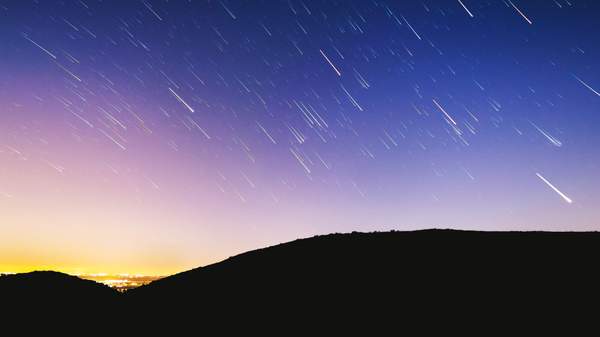Overview
Every autumn, the Eta Aquarid meteor shower sets the sky ablaze. It might not be as famous as Halley's Comet, but the Eta Aquarids are actually a distant relation — the bits and pieces you see flying around were on Halley's path a really, really long time ago. And, rather than only being visible every 75 years (the next Halley's Comet sighting is in 2061), you can catch the Eta Aquarids annually. This year, the shower will be at its most spectacular early Tuesday, May 7 (very early) — here's how to catch a glimpse.
WHEN TO SEE IT
The shower will reach a peak in the early morning of Tuesday, May 7, but will still be able to be seen for a day or two on either side. The best time to catch an eyeful is just before dawn after the moon has set, so around 2am.
At that time, you'll be in the running to see as many as 30 meteors every 60 minutes. Each will be moving at about 225,000 kilometres per hour, shining extraordinarily brightly and leaving a long wake. The shower's cause is, essentially, the Earth getting in the comet's way, causing stardust to fry up in the atmosphere.
WHERE TO SEE IT
Being in the southern hemisphere, we get some of the best views in the world. So, if you're living in the city, it could be time for a last minute trip to a clear-skied camping spot. The trick is to get as far away from light pollution as possible.
For Aucklanders, this could mean a trip north to the Whangaparoa Peninsula or in the completely opposite direction to Manukau Heads. Any of the west coast beaches will suffice, though you'd be hard pressed to find better light-free view than the far shoulder of Waiheke or Great Barrier.
Wellingtonians might consider a journey out west to Makara Beach or Rimutaka Forest where there's hardly a light in sight. For somewhere closer, try the eastern harbour.
HOW TO SEE IT
The shower's name comes from the star from which they appear to come Eta Aquarii, which is part of the Aquarius constellation. So, that's what you'll be looking for in the sky. To locate Eta Aquarii, we recommend downloading the Sky Map app — it's the easiest way to navigate the night sky (and is a lot of fun to use even on a non-meteor shower night). If you're more into specifics, Time and Date also have a table that shows the direction and altitude of the Eta Aquarids. They've been updating this daily.
Apart from that, wear warm clothes, take snacks and be patient. Happy stargazing.
